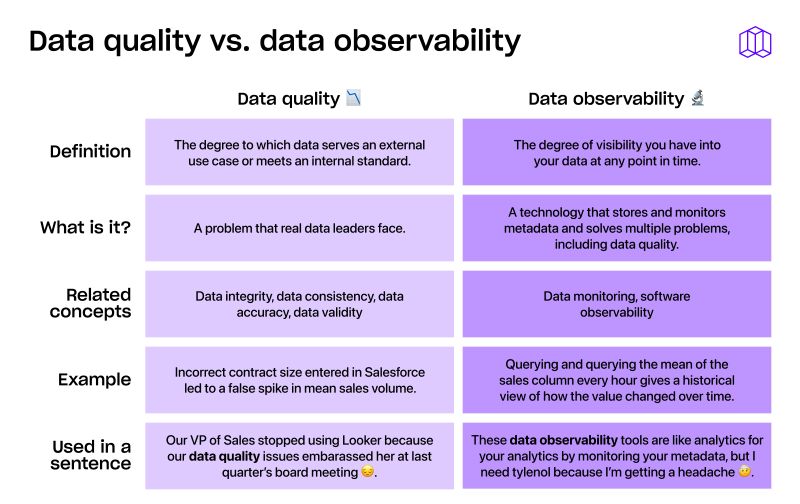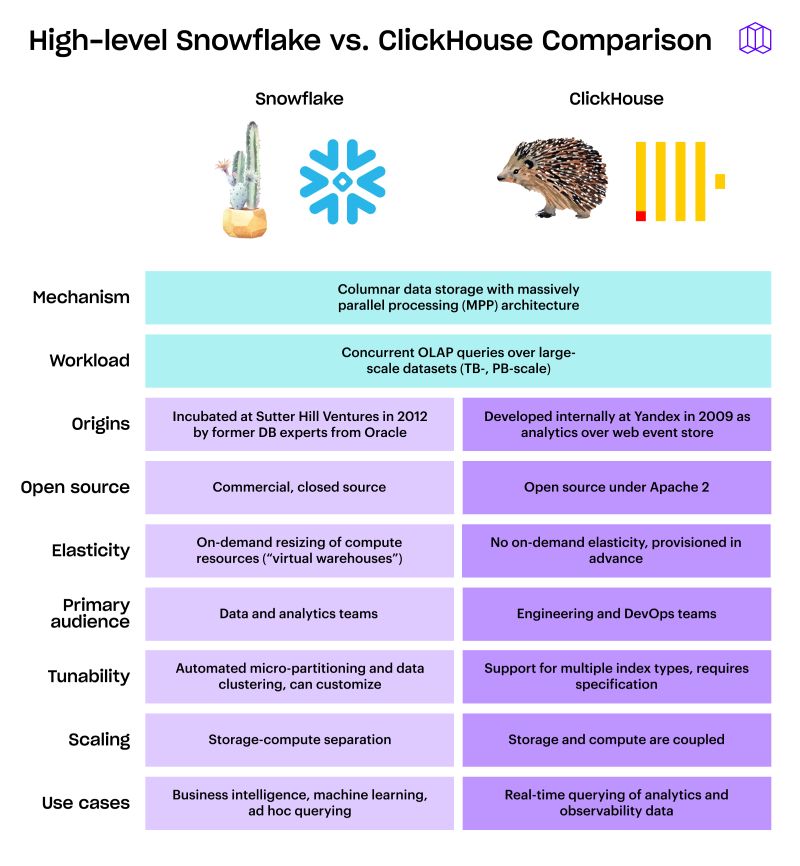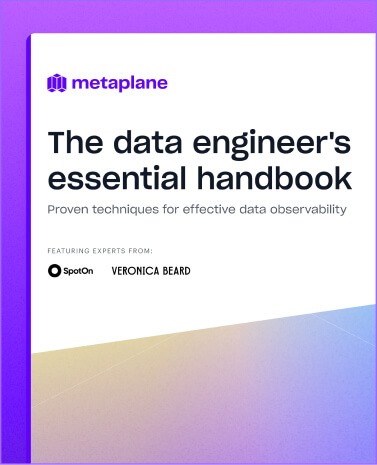The 5 best ways to handle NULL values in SQL
There's no one-size-fits-all solution for handling NULL values—it all depends on context and what you're trying to do. With that in mind, here are five ways of working with NULL values in SQL that should solve almost all of your use cases with ease.

Handling NULL values isn't the most difficult challenge a data engineer will face on any given week, but it is one of the most common—and most annoying.
There's no single answer for how to work with NULLs, either. Whether you're wrestling with customer data, debugging financial reports, or building automated dashboards, it's always going to look different based on context.
That said, we're going to cover five of the best ways to handle NULL values so that you're prepared for any scenario. We'll cover how each technique works, when to use it, and pro tips to keep in mind.
1. Using COALESCE for default values
Ever had stakeholders complain about "missing" values in their marketing attribution dashboard? Here's a scenario that might sound familiar:
```sql
-- Raw data might look like this
SELECT user_id, campaign_source, conversion_value
FROM user_interactions
LIMIT 3;
-- Results:
-- user_id | campaign_source | conversion_value
-- 101 | facebook_ads | 150
-- 102 | NULL | 75
-- 103 | NULL | 200
```
Instead of letting those NULLs create confusion, use `COALESCE` to provide meaningful context:
```sql
SELECT
user_id,
COALESCE(campaign_source, 'direct_traffic') as attribution_source,
conversion_value
FROM user_interactions;
```
This query examines each row's `campaign_source`. When it finds a NULL, instead of passing that NULL downstream, it substitutes `direct_traffic` as the value. It's like having a safety net that catches missing values and replaces them with something meaningful for your analysis.
Watch out for type mismatches in `COALESCE` arguments. If you're working with numeric columns, ensure all your fallback values match the column type. I've seen many cases where someone writes `COALESCE(numeric_column, 'N/A')` and the query fails.
Pro tip: `COALESCE` really shines when you need to establish a fallback hierarchy. Say you're building a customer contact system that needs to prioritize different contact methods:
```sql
SELECT
customer_id,
COALESCE(
mobile_phone,
work_phone,
email,
'No contact info available - requires update'
) AS primary_contact
FROM customer_profile;
```
Under the hood, this query creates a prioritized contact lookup system. It first checks for a mobile number. No mobile? It checks work phone. No work phone? It tries email. If all three are NULL, it falls back to our default message. This cascading check continues until it finds the first non-NULL value, making it perfect for implementing business logic around data hierarchies.
2. ISNULL and IFNULL for simple substitutions
Imagine you're building a real-time inventory management dashboard. Some products haven't had their reorder points set yet, but you need to make sure the system doesn't break:
```sql
-- SQL Server version
SELECT
product_name,
current_stock,
ISNULL(reorder_point, 10) as safe_reorder_point
FROM inventory_status;
-- MySQL/Snowflake version
SELECT
product_name,
current_stock,
IFNULL(reorder_point, 10) as safe_reorder_point
FROM inventory_status;
```
These queries are your safety net for inventory management. They check each product's `reorder_point` value. Any time they encounter a NULL (meaning no reorder point has been set), they automatically substitute 10 as a safe default threshold.
Remember that `ISNULL` and `IFNULL`aren't universally supported. If you're writing cross-platform SQL, stick with `COALESCE`. Otherwise, if you're working with Snowflake and another warehouse, you might end up having to update hundreds of `ISNULL` calls.
Pro tip: When you only need a simple substitution and want to keep your code as readable as possible, `ISNULL`/`IFNULL` are your friends. They're often slightly more performant than `COALESCE` for simple replacements.
3. Handling NULLs in aggregations
Imagine you're calculating monthly revenue metrics, and a stakeholder asks why the numbers don't match their expectations. Before you fire back a message telling them to check their numbers, try this.
```sql
SELECT
date_trunc('month', order_date) as month,
AVG(COALESCE(transaction_amount, 0)) as avg_order_value,
COUNT(*) as total_orders,
COUNT(*) - COUNT(transaction_amount) as failed_transactions,
SUM(CASE WHEN transaction_amount IS NULL THEN 1 ELSE 0 END) as null_amount_count
FROM orders
GROUP BY 1;
```
Let's break this query down. First, it groups orders by month. Then, for the average calculation, it treats NULL transaction amounts as 0 instead of ignoring them. It also gives you a complete picture of your data quality by counting total orders, calculating how many transactions failed, and explicitly counting NULL transactions.
Be careful with NULL handling in window functions. Unlike regular aggregations, window functions can produce unexpected results with NULLs. For example, `FIRST_VALUE(column) OVER (...)` might return NULL even when you have non-NULL values in your partition if the first row happens to be NULL.
Pro tip: Always provide context around NULL counts in your aggregations. It helps stakeholders understand data quality issues and can surface important insights.
4. Using CASE statements for complex logic
`CASE` statements are another great way to work with NULL values—particularly when working with complex logic.
Let's say you're building a customer health scoring system that needs to handle multiple scenarios for missing data.
```sql
SELECT
customer_id,
CASE
WHEN last_login IS NULL AND signup_date < CURRENT_DATE - 90
THEN 'Inactive - High Risk'
WHEN last_login IS NULL AND signup_date >= CURRENT_DATE - 90
THEN 'New User - Monitoring'
WHEN last_login > CURRENT_DATE - 30
THEN 'Active'
ELSE 'Inactive - Low Risk'
END as customer_status,
CASE
WHEN subscription_end_date IS NULL AND trial_end_date IS NULL
THEN 'No Trial Started'
WHEN subscription_end_date IS NULL AND trial_end_date > CURRENT_DATE
THEN 'Trial Active'
WHEN subscription_end_date > CURRENT_DATE
THEN 'Subscribed'
ELSE 'Churned'
END as subscription_status
FROM customer_activity;
```
This query is implementing a customer health scoring system that considers multiple factors. The first `CASE` statement evaluates user activity patterns, distinguishing between new users who haven't logged in yet (potentially normal) and long-term users who haven't logged in (potentially concerning).
`CASE` statements evaluate conditions in order and stop at the first match. If your conditions overlap, you might not get the results you expect. Always test your `CASE` statements with edge cases, especially around NULL handling.
Pro tip: When your `CASE` logic gets complex, consider breaking it into CTEs or views. This makes your code more maintainable and easier to test. Here's how:
```sql
WITH user_activity AS (
SELECT
customer_id,
CASE
WHEN last_login IS NULL AND signup_date < CURRENT_DATE - 90
THEN 'Inactive - High Risk'
WHEN last_login IS NULL AND signup_date >= CURRENT_DATE - 90
THEN 'New User - Monitoring'
WHEN last_login > CURRENT_DATE - 30
THEN 'Active'
ELSE 'Inactive - Low Risk'
END as customer_status
FROM customer_activity
)
-- Now you can test this CTE independently
SELECT customer_status, COUNT(*)
FROM user_activity
GROUP BY 1;
```
5. NULL-aware filtering and joins
Sometimes, you need to find a solution that goes beyond simply finding missing data. You need something that understands the pattern of nulls across related tables and determining whether they represent actual data gaps or valid business states.
Let's say you need to find orders that haven't been properly attributed to marketing channels:
```sql
SELECT
o.order_id,
o.order_date,
o.order_value,
COALESCE(COUNT(a.attribution_id), 0) as attribution_touchpoints
FROM orders o
LEFT JOIN attribution_events a
ON o.order_id = a.order_id
WHERE a.attribution_id IS NULL
GROUP BY 1, 2, 3;
```
This query pattern does the heavy lifting for you in several ways. The `LEFT JOIN` ensures you keep all your base records (orders in this case), while the `WHERE` clause helps you zero in on the gaps. The `COALESCE` around the `COUNT` ensures you get clean zeros instead of NULLs in your output—trust me, your downstream consumers will thank you for this.
Something to look out for: If your `JOIN` includes multiple conditions with potentially NULL values, you might need to handle each one explicitly. Like this:
```sql
-- This might miss matches due to NULLs
ON a.order_id = b.order_id AND a.region = b.region
-- Better approach
ON a.order_id = b.order_id
AND COALESCE(a.region, 'UNKNOWN') = COALESCE(b.region, 'UNKNOWN')
```
Pro tip: Create a data quality monitoring suite using NULL-aware joins. Here's a template you can use:
```sql
WITH data_quality_checks AS (
SELECT
'Missing Attribution' as check_name,
COUNT(*) as failing_records,
COUNT(*) * 100.0 / (SELECT COUNT(*) FROM orders) as failure_rate
FROM orders o
LEFT JOIN attribution_events a
ON o.order_id = a.order_id
WHERE a.attribution_id IS NULL
UNION ALL
SELECT
'Missing Customer Info',
COUNT(*),
COUNT(*) * 100.0 / (SELECT COUNT(*) FROM orders)
FROM orders o
LEFT JOIN customers c
ON o.customer_id = c.customer_id
WHERE c.customer_id IS NULL
)
SELECT *
FROM data_quality_checks
WHERE failure_rate > 5 -- Alert threshold
ORDER BY failure_rate DESC;
```
Best ways to handle NULL values at a glance
NULL handling isn't just about cleaning up data–it's about building robust systems that gracefully handle incomplete information. Keep these techniques in your tool belt:
1. Use `COALESCE` for flexible fallback hierarchies
2. Reach for `ISNULL`/`IFNULL` when simplicity matters
3. Make NULL handling explicit in your aggregations
4. Leverage `CASE` statements for complex business logic
5. Build NULL-aware joins and filters for data quality analysis
Remember: The best NULL handling strategy is the one that makes your data's behavior transparent to your stakeholders. When in doubt, make your NULL handling explicit and document your choices!
Ready to level up your SQL game? Start by auditing your existing queries for NULL handling patterns–you might be surprised what you find!
Table of contents
Tags
...

...



















